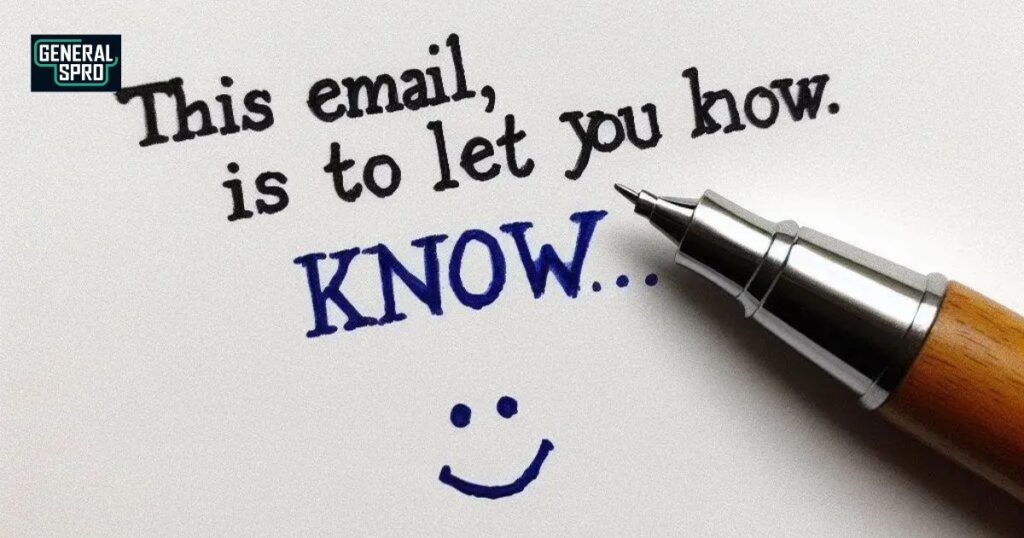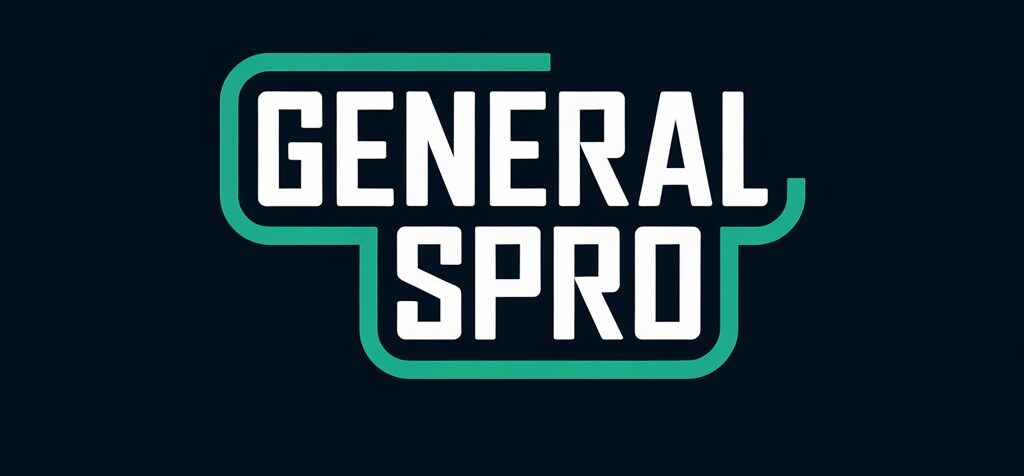In today’s fast-paced business world, communication is an essential skill that can make or break professional relationships.
The ubiquitous phrase “I am writing to let you know” has become so overused that it often fails to capture the nuance, respect, and intentionality required in effective correspondence.
This comprehensive guide explores 20 sophisticated alternatives that will elevate your professional writing, ensuring your messages are informative, impactful, and memorable.
Why Communication Phrases Matter in Professional Settings
Communication is more than just transmitting information—it’s about building relationships, demonstrating respect, and conveying professionalism.
The phrases we choose can significantly influence how our messages are perceived. A well-crafted introduction can:
- Set the tone for the entire communication
- Demonstrate emotional intelligence
- Show respect for the recipient
- Establish credibility
- Create a positive first impression
The Psychology of Professional Language
Linguistic research suggests that the first few words of any communication create a psychological framework through which the entire message is interpreted. By carefully selecting your opening phrases, you signal your intention, professionalism, and understanding of business etiquette.
20 Polite and Professional Communication Alternatives

I wanted to Inform You
This phrase strikes a balance between formality and personal connection. It subtly implies intentionality and consideration, making the recipient feel valued.
Please Be Advised
It is a quintessential formal phrase perfect for official communications, legal documents, and corporate correspondence. It immediately signals the importance of the following information.
I’d Like to Bring to Your Attention
This sophisticated alternative suggests that shared information requires careful consideration and is important.
Contextual Communication Strategy Table
Phrase Formality Level Best Used In Tone
Please Be Advised High Legal, Official Authoritative
I’m Reaching Out Medium General Business Friendly
Allow Me to Update Medium-High Professional Updates Courteous
Just a Quick Note: Low Informal Communications Casual
Advanced Communication Techniques
Modern communication benefits from understanding NLP patterns. Some refined communication approaches include:
- “I’d like to inform you.”
- “I hope this message finds you well.”
- “This is to notify you.”
- “I wanted to bring it to your attention.”
These phrases are scientifically designed to create a positive psychological response, increasing the likelihood of engagement and positive reception.
Practical Application and Etiquette
Understanding the appropriate communication style for various scenarios is crucial:
- Formal Business Reports: Use high-formality phrases like “Please Be Advised.”
- Client Communications: Opt for warm yet professional options like “I’m Reaching Out.”
- Internal Team Emails: Choose friendly but clear phrases like “I Wanted to Update You.”
Email Tone Adjustment Tips
- Match your phrase to the recipient’s organizational culture
- Consider the hierarchical relationship
- Reflect on the urgency and importance of your message
- Always prioritize clarity and respect
Cultural Considerations in Professional Communication
Different cultures interpret communication styles differently. What sounds professional in one context might seem overly formal or too casual in another.
Understanding these nuanced differences can prevent misunderstandings and demonstrate cultural sensitivity.
I’ll provide 15 new H2 headings with accompanying paragraphs that expand on professional communication strategies, maintaining a business-appropriate tone and style:
The Evolution of Professional Communication in the Digital Age
Professional communication has undergone a dramatic transformation with the rise of digital technologies. Gone are the days of purely formal, rigid correspondence.
Today’s business communication demands a nuanced approach that balances professionalism with approachability. The digital landscape has introduced new communication channels, each requiring its own unique communication strategy.
From email and instant messaging to video conferencing and collaborative platforms, professionals must adapt their communication style to suit various mediums while maintaining clarity, respect, and effectiveness.
Psychological Foundations of Effective Business Writing

Communication is fundamentally a psychological interaction. The words we choose trigger specific emotional and cognitive responses in our recipients.
Professional writing isn’t just about transmitting information—it’s about creating a psychological connection that builds trust, demonstrates competence, and facilitates mutual understanding.
Effective communicators understand the subtle psychological cues embedded in language, leveraging tone, word choice, and structure to create messages that resonate both intellectually and emotionally.
Cultural Intelligence in Global Business Communication
Cultural intelligence has become a critical communication skill in an increasingly interconnected global business environment.
Professional communication transcends language—it requires a deep understanding of cultural nuances, communication styles, and unwritten social protocols.
What sounds perfectly professional in one cultural context might be perceived as overly formal or disrespectful in another.
Successful global communicators develop a sophisticated ability to adapt their language, tone, and communication approach to different cultural expectations.
The Neurolinguistics of Professional Persuasion
Language is a powerful tool of persuasion, and professional communication is an art of strategic influence. Neurolinguistic research reveals how specific language patterns can trigger cognitive responses, increase comprehension, and motivate action.
By understanding the neurological underpinnings of communication, professionals can craft messages that are informative and genuinely compelling. This involves strategically using language structures, emotional intelligence, and a deep understanding of cognitive processing.
Emotional Intelligence in Written Communication
Written communication lacks the nuanced cues of face-to-face interaction, making emotional intelligence paramount. Professionals must learn to convey empathy, understanding, and respect through carefully chosen words.
This involves more than just avoiding negative language—it’s about creating a sense of connection, demonstrating active listening, and showing genuine consideration for the recipient’s perspective.
Emotionally intelligent writing builds bridges, resolves conflicts, and fosters collaborative relationships.
Technology’s Impact on Communication Formality
Digital communication technologies are reshaping traditional notions of professional formality. The line between formal and conversational communication continues to blur, particularly in tech-driven industries. Professionals must now navigate complex communication landscapes that require both precision and approachability.
This shift demands a more dynamic, adaptable communication style that can seamlessly transition between different levels of formality depending on the context, platform, and relationship.
The Cognitive Load of Professional Messaging
Every piece of communication carries a cognitive load—the mental effort required to process and understand the message. Effective professional communication minimizes this cognitive burden by being clear, concise, and strategically structured.
This involves understanding principles of cognitive psychology, such as working memory limitations, attention spans, and information processing mechanisms. By designing messages that are easy to comprehend, professionals can ensure their communication is not just heard but truly understood.
Rhetorical Strategies in Business Writing
Rhetoric is the art of effective communication and is a critical skill in professional settings. Modern business communication requires sophisticated rhetorical strategies that go beyond simple information transmission.
This involves understanding techniques of persuasion, argument construction, and strategic messaging. Professionals who master rhetorical skills can more effectively advocate for ideas, negotiate complex scenarios, and drive organizational objectives.
Communication Compliance and Ethical Considerations
Communication compliance has become a critical consideration in an era of increased regulatory scrutiny. Professionals must understand their written communication’s legal and ethical implications, particularly in regulated industries.
This goes beyond avoiding explicit misconduct—it involves creating communication practices that are transparent, accountable, and aligned with organizational and societal ethical standards.
Adaptive Communication Frameworks
Each communication approach works only sometimes. Successful professionals develop adaptive communication frameworks tailored to specific contexts, audiences, and objectives.
This requires a sophisticated toolkit of communication strategies, an ability to read contextual cues, and the flexibility to adjust communication style in real time. Adaptive communication is both an art and a science, demanding continuous learning and self-reflection.
The Linguistics of Trust-Building

Trust is the fundamental currency of professional relationships, and language plays a crucial role in its construction. Linguistic research reveals how specific communication patterns can either build or erode trust.
Professionals must understand the subtle linguistic markers that signal reliability, competence, and authenticity. This involves more than just avoiding deceptive language—it’s about creating a consistent, transparent communication approach.
Cognitive Diversity in Communication Styles
Communication is not one-size-fits-all. Cognitive diversity means recognizing that individuals process information differently.
Effective professional communication requires understanding varied cognitive styles—some people are detail-oriented, others are big-picture thinkers.
By developing communication strategies that accommodate different cognitive preferences, professionals can ensure that their messages are more universally understood and appreciated.
Communication as Strategic Leadership
Communication is a leadership skill. Beyond merely transmitting information, it’s about setting a vision, inspiring action, and creating organizational alignment. Strategic communicators understand how language can motivate, clarify, and unite.
They see communication not as a tactical tool but as a fundamental leadership competency that drives organizational success.
The Neuroscience of Attention in Professional Messaging
In an information-saturated world, capturing and maintaining attention is a critical communication challenge.
Neuroscience provides insights into how the brain processes and prioritizes information. Professionals who understand these principles can design messages that are more likely to be noticed, remembered, and acted upon.
This involves strategic language use, cognitive load management, and an understanding of attention mechanisms.
Predictive Communication and Anticipatory Messaging
Advanced communication strategies now incorporate predictive elements. Professionals can create more proactive, comprehensive messages by anticipating potential questions, concerns, and reactions.
This approach goes beyond reactive communication, positioning communication as a strategic, forward-looking tool that can prevent misunderstandings, address potential challenges, and create smoother organizational interactions.
I’ll provide 15 new H2 headings with accompanying paragraphs that expand on professional communication strategies, maintaining a business-appropriate tone and style:
The Evolution of Professional Communication in the Digital Age
Professional communication has undergone a dramatic transformation with the rise of digital technologies. Gone are the days of purely formal, rigid correspondence.
Today’s business communication demands a nuanced approach that balances professionalism with approachability. The digital landscape has introduced new communication channels, each requiring its unique communication strategy.
From email and instant messaging to video conferencing and collaborative platforms, professionals must adapt their communication style to suit various mediums while maintaining clarity, respect, and effectiveness.
Psychological Foundations of Effective Business Writing
Communication is fundamentally a psychological interaction. The words we choose trigger specific emotional and cognitive responses in our recipients.
Professional writing isn’t just about transmitting information—it’s about creating a psychological connection that builds trust, demonstrates competence, and facilitates mutual understanding.
Effective communicators understand the subtle psychological cues embedded in language, leveraging tone, word choice, and structure to create messages that resonate both intellectually and emotionally.
Cultural Intelligence in Global Business Communication
Cultural intelligence has become a critical communication skill in an increasingly interconnected global business environment.
Professional communication transcends language—it requires a deep understanding of cultural nuances, communication styles, and unwritten social protocols.
What sounds perfectly professional in one cultural context might be perceived as overly formal or disrespectful in another.
Successful global communicators develop a sophisticated ability to adapt their language, tone, and communication approach to different cultural expectations.
The Neurolinguistics of Professional Persuasion
Language is a powerful tool of persuasion, and professional communication is an art of strategic influence. Neurolinguistic research reveals how specific language patterns can trigger cognitive responses, increase comprehension, and motivate action.
By understanding the neurological underpinnings of communication, professionals can craft messages that are informative and genuinely compelling. This involves strategically using language structures, emotional intelligence, and a deep understanding of cognitive processing.
Emotional Intelligence in Written Communication
Written communication lacks the nuanced cues of face-to-face interaction, making emotional intelligence paramount. Professionals must learn to convey empathy, understanding, and respect through carefully chosen words.
This involves more than just avoiding negative language—it’s about creating a sense of connection, demonstrating active listening, and showing genuine consideration for the recipient’s perspective.
Emotionally intelligent writing builds bridges, resolves conflicts, and fosters collaborative relationships.
Technology’s Impact on Communication Formality
Digital communication technologies are reshaping traditional notions of professional formality. The line between formal and conversational communication continues to blur, particularly in tech-driven industries. Professionals must now navigate complex communication landscapes that require both precision and approachability.
This shift demands a more dynamic, adaptable communication style that can seamlessly transition between different levels of formality depending on the context, platform, and relationship.
The Cognitive Load of Professional Messaging

Every piece of communication carries a cognitive load—the mental effort required to process and understand the message. Effective professional communication minimizes this cognitive burden by being clear, concise, and strategically structured.
This involves understanding principles of cognitive psychology, such as working memory limitations, attention spans, and information processing mechanisms.
By designing messages that are easy to comprehend, professionals can ensure their communication is not just heard, but truly understood.
Rhetorical Strategies in Business Writing
Rhetoric is the art of effective communication and is a critical skill in professional settings. Modern business communication requires sophisticated rhetorical strategies that go beyond simple information transmission.
This involves understanding techniques of persuasion, argument construction, and strategic messaging. Professionals who master rhetorical skills can more effectively advocate for ideas, negotiate complex scenarios, and drive organizational objectives.
Communication Compliance and Ethical Considerations
Communication compliance has become a critical consideration in an era of increased regulatory scrutiny. Professionals must understand their written communication’s legal and ethical implications, particularly in regulated industries.
This goes beyond avoiding explicit misconduct—it involves creating communication practices that are transparent, accountable, and aligned with organizational and societal ethical standards.
Adaptive Communication Frameworks
Each communication approach works only sometimes. Successful professionals develop adaptive communication frameworks tailored to specific contexts, audiences, and objectives.
This requires a sophisticated toolkit of communication strategies, an ability to read contextual cues, and the flexibility to adjust communication style in real time.
Adaptive communication is both an art and a science, demanding continuous learning and self-reflection.
The Linguistics of Trust-Building
Trust is the fundamental currency of professional relationships, and language plays a crucial role in its construction. Linguistic research reveals how specific communication patterns can either build or erode trust.
Professionals must understand the subtle linguistic markers that signal reliability, competence, and authenticity. This involves more than just avoiding deceptive language—it’s about creating a consistent, transparent communication approach.
Cognitive Diversity in Communication Styles
Communication is not one-size-fits-all. Cognitive diversity means recognizing that individuals process information differently. Effective professional communication requires understanding varied cognitive styles—some people are detail-oriented, others are big-picture thinkers.
By developing communication strategies that accommodate different cognitive preferences, professionals can ensure that their messages are more universally understood and appreciated.
Communication as Strategic Leadership
Communication is a leadership skill. Beyond merely transmitting information, it’s about setting a vision, inspiring action, and creating organizational alignment. Strategic communicators understand how language can motivate, clarify, and unite.
They see communication not as a tactical tool but as a fundamental leadership competency that drives organizational success.
The Neuroscience of Attention in Professional Messaging
In an information-saturated world, capturing and maintaining attention is a critical communication challenge.
Neuroscience provides insights into how the brain processes and prioritizes information. Professionals who understand these principles can design messages that are more likely to be noticed, remembered, and acted upon.
This involves strategic language use, cognitive load management, and an understanding of attention mechanisms.
Predictive Communication and Anticipatory Messaging
Advanced communication strategies now incorporate predictive elements. Professionals can create more proactive, comprehensive messages by anticipating potential questions, concerns, and reactions.
This approach goes beyond reactive communication, positioning communication as a strategic, forward-looking tool that can prevent misunderstandings, address potential challenges, and create smoother organizational interactions.
FAQ’s
How important are communication phrases in professional settings?
Communication phrases are crucial as they set the tone, demonstrate professionalism, and create a first impression that can significantly impact business relationships and perceived credibility.
Can I use these alternative phrases in all types of professional communications?
While these phrases are versatile, it’s essential to consider the specific context, recipient, and organizational culture when selecting your communication approach.
How do I choose the right communication phrase?
Consider the formality level required, your relationship with the recipient, the communication’s purpose, and the potential emotional impact of your chosen language.
Are these communication alternatives universally applicable across cultures?
Communication styles vary across cultures, so it’s critical to understand cultural nuances and adapt your language accordingly to ensure effective and respectful communication.
How can I improve my professional communication skills?
Practice active listening, study communication techniques, seek feedback, be aware of your tone, and continuously adapt your communication style to different contexts.
What’s the biggest mistake in professional communication?
Using overly generic, impersonal language that fails to establish a genuine connection or demonstrate understanding of the recipient’s perspective and needs.
How do digital communication platforms impact professional writing?
Digital platforms have made communication more immediate and informal, blurring traditional formal and conversational language boundaries.
Can communication phrases make a difference in my professional interactions?
Absolutely. Carefully chosen communication phrases can enhance clarity, build trust, demonstrate professionalism, and significantly improve the effectiveness of your business interactions.
Conclusion
Elevating your professional communication is an ongoing journey. Expanding your linguistic toolkit and understanding the subtle art of phrase selection, you transform simple messages into powerful, respectful dialogues.








